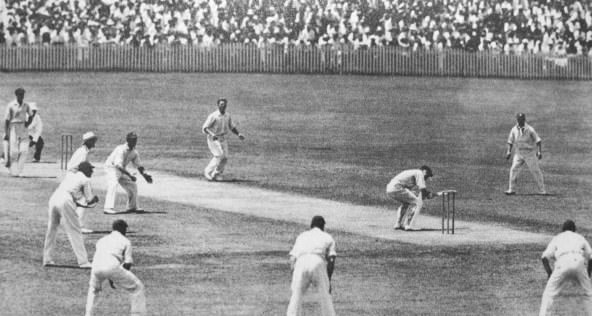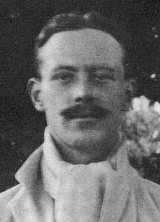The name Leonard Crawley is prominent not only in the history of golf, but also several other sports.
Born in Nacton in Suffolk, and educated at Cambridge, he was an excellent golfer and tennis player, a fine shot, enjoyed ice skating, and his cricket was of such a high standard he was asked about his availability to join what would become known as the Bodyline Tour of Australia in 1932-33.
Leonard had to decline on the grounds that he had already been selected to play in the 1932 Walker Cup Match at Brookline, Massachusetts, where he turned out to be the only Great Britain and Ireland player to score a point. He was picked again in 1934, was on the winning GB&I team of 1938, and made the side again in 1947, a notable four appearances in total.
It was perhaps just as well Leonard couldn’t play in Australia, because the hostile English 'leg theory' fast bowling - masterminded by England captain Douglas Jardine and delivered for the most part by formidable quickie Harold Larwood - put a severe sporting and diplomatic strain on the relationship between the visiting and home nations. The tactic was meant to thwart the skills of Don Bradman, but also involved less able batsmen being struck by high velocity, bone crushing bouncers, something which inflamed the watching crowds.

The 4th Test at Brisbane. Bill Woodfull ducks beneath a Larwood bouncer.
As a cricketer Leonard Crawley made plenty of fifties and hundreds, ending his career with a batting average of just over 30. As an amateur golfer, he won too many prizes to list here. Later, when he decided to call competitive golf a day, he became the golf correspondent for the Daily Telegraph, and did the job for a quarter of a century.
As both player and writer Leonard Crawley was no stranger to Royal Liverpool Golf Club, whether swinging a club or bashing a typewriter. However, one visit he made is notable for a breach of etiquette that saw him straying out of bounds in a Wirral home.
We don’t know if this incident took place during Leonard Crawley’s playing or writing days, but what is certain is that he was a guest in the home of a Hoylake member.
Philip Stern, RLGC Captain in 1999, takes up the story: “Leonard Crawley was staying with my Grandfather and Grandmother, Maurice and Laura Stern. My Grandfather told me how, one morning, Laura came down to breakfast...to witness Leonard curling his moustache with her beloved silver sugar tongs...and swiftly invited him to leave.”
Leonard Crawley, so used to winning, had met his match.




